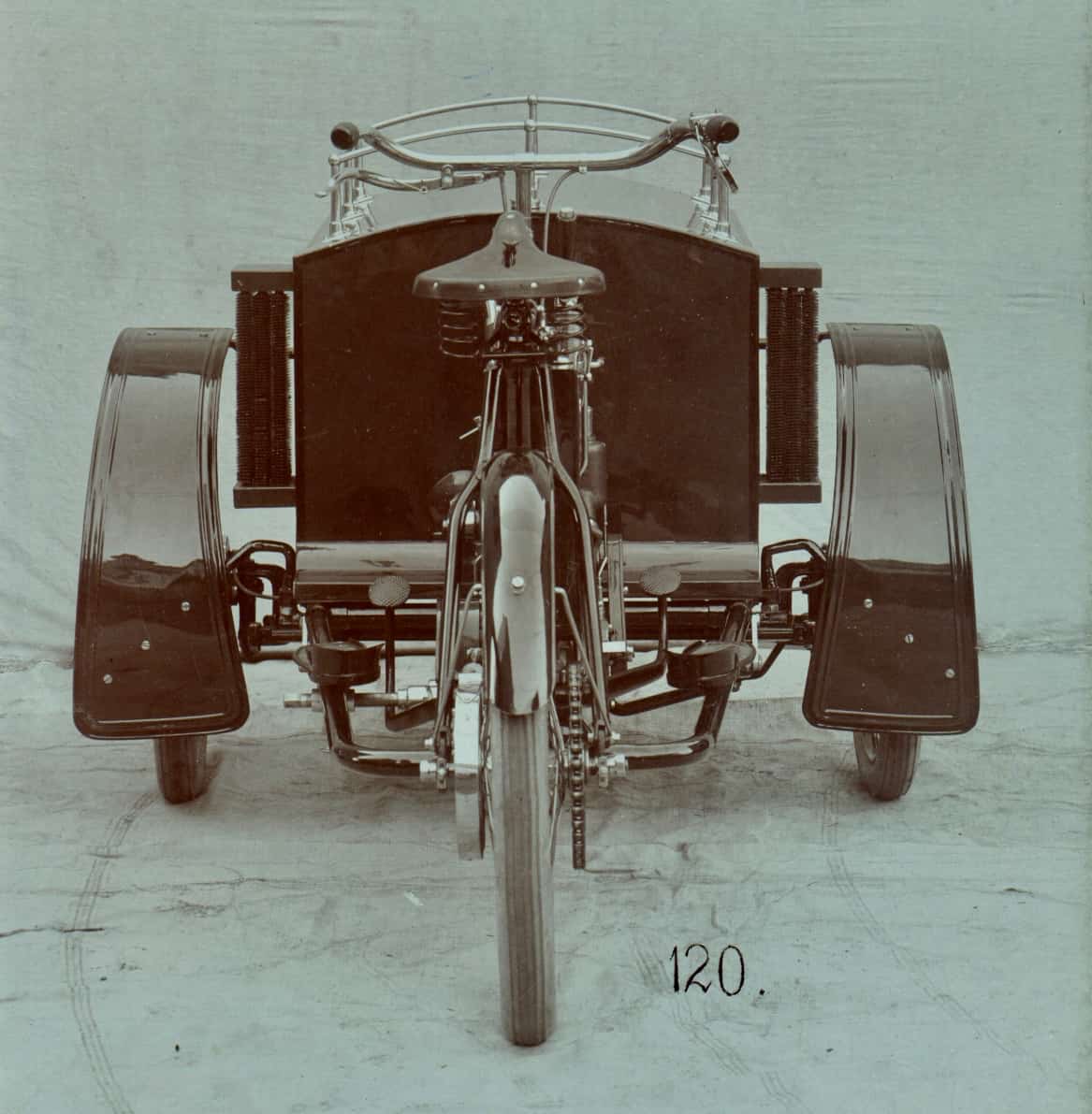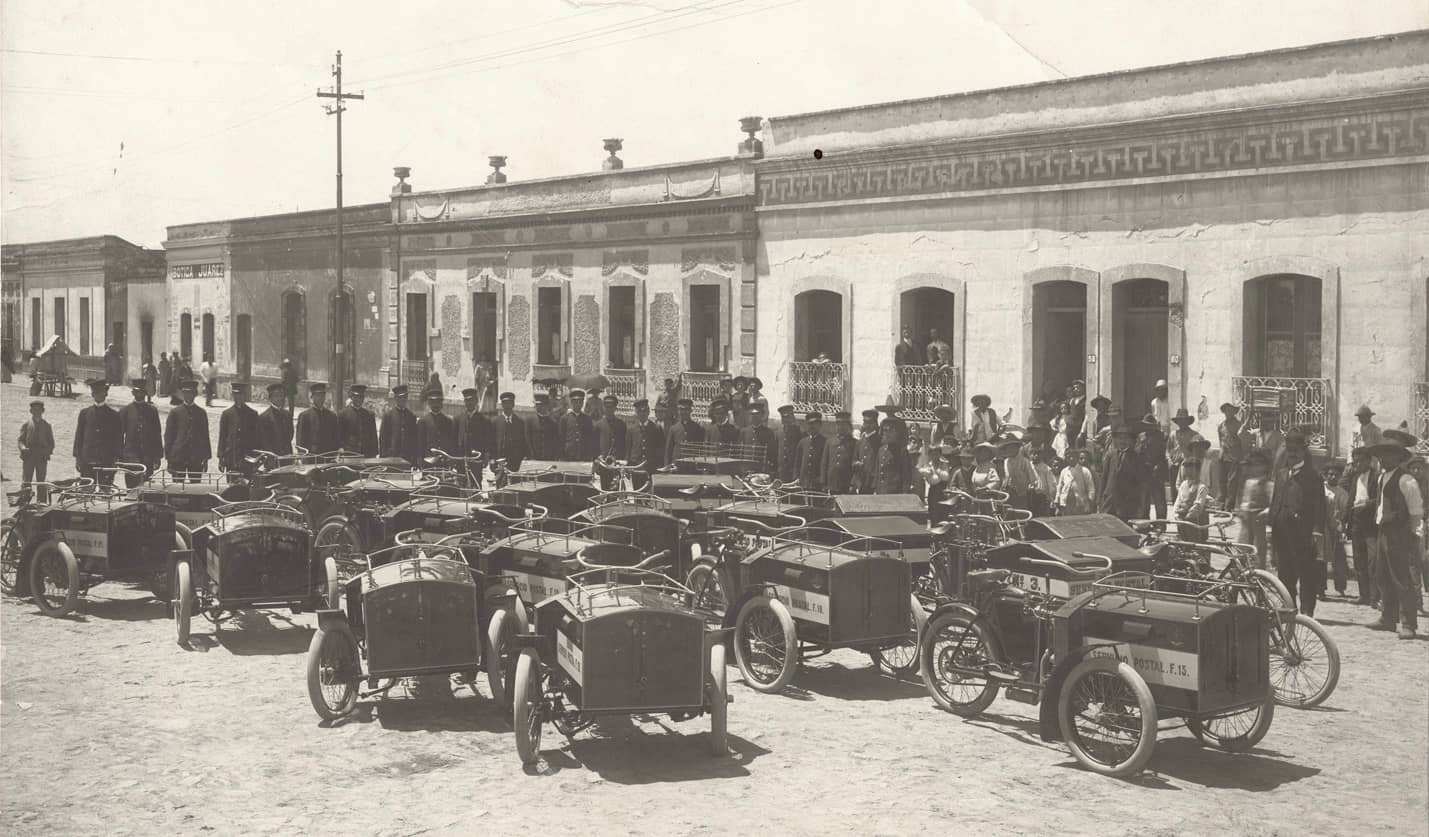You may not be familiar with the automaker founded as Laurin & Klement, though you likely have heard of its successor, Skoda, now part of the Volkswagen Group. Skoda (nee Laurin & Klement) celebrates its 125th anniversary in 2020 and is recalling some of its “lesser-known” vehicles.
For example, the LW, a 3-wheeler propelled by a water-cooled, single-cylinder, 5-horsepower engine.

Laurin & Klement dates to 1895, when Vaclav Laurin, a mechanic, and Vaclav Klement, a bookseller, founded a bicycle repair shop in Mlada Boleslav, in the Bohemian region of the Austro-Hungarian Empire.
Within two years, the pair was designing its own bicycles and employing a staff of 28 people to build them. By 1903, they also were among the first companies in the world mass-producing engines, a 2-cylinder V-type.
As the story goes, Klement visited Paris, was inspired by the motorized bicycles and tricycles he saw, and set out to produce an improved design.

In 1905, Laurin & Klement launched its own 3-wheeler, the LV, but also its first 4-wheel Voiturette, designated as the model A.
The LW could run up to speeds as fast as 25 mph. The driver had a motorbike-style saddle mounted above the rear axle and looked forward over the heads of two passengers on a front-mounted, leather-covered bench seat, or over a cargo box that would carry as much as 440 pounds of goods.
Laurin & Klement developed a 4-cylinder, water-cooled engine in 1903 to power 2-wheelers.
“With a displacement of 600cc, the LW reached a remarkable top speed of 70 km/h (nearly 45 mph),” Skoda notes. “Still, only 10 units were sold between 1903 and 1905: with its cylindrical radiator, whose ribs spanned the frame at the level of the steering head bearing, it was probably too complicated for the customers of the time.

“It was not until the three-wheelers based on the LW motorbike, which, unlike the two-wheelers, carried the engine in front of the chain-driven rear wheel, that the advantages of water cooling really came into their own.
“The seating position of the passengers or the loading box above the front axle restricted the three-wheelers’ supply of cooling air. Another hurdle on the way from the motorcycle to the three-wheeler was that the engine capacity of up to 0.8 liters also increased the resistance to starting the engine, which at that time was started by pushing it.
“A decompression lever simplified this complicated process: it kept the exhaust valve open and thus reduced the back pressure in the cylinder when the engine was moving. When it was released, the engine built up the necessary compression again and started. The decompression lever could also be used to switch the engine off, and in an intermediate position, the lever allowed the engine speed to be reduced for a short time without adjusting the carburetor.
“However, the decompression lever was no longer sufficient to move larger and heavier motorcycles with sidecars, trailers or a front-mounted car for passengers. So Václav Laurin’s design team developed an idle hub and clutch and installed a two-speed gearbox. This allowed the engine to be started even when the vehicle was stationary.”
This innovation reportedly made the vehicle practical of commercial use by small businesses and the postal service.
“L&K models were soon in demand in other international markets,” Skoda reports. “In 1908, some Laurin & Klement three-wheelers… went as far as Mexico.”
The water cooler was located in front of the engine and comprised a pair of tightly ribbed, laterally placed elements. The cooling circuit worked according to the ‘thermosiphon’ principle: The lighter hot water flowed into the cooler from above. As the temperature was reduced, the water sank due to its higher density and was led back down to the engine – the warmer the engine, the better this effect worked.
L&K also developed its own carburetor. Production of the 3-wheeler continued until 1911. One 3 are known to survive, one on loan from the National Technical Museum in Prague is on display at the Skoda Museum in Mlada Boleslav.
The Laurin & Klement facilities were devastated by a fire in 1924 and the company was enfolded into Skoda, a huge engineering company that produced everything from bridges to power stations, refineries and breweries, aircraft and locomotives and, starting in 1925, automobiles.
Skoda currently produces 9 series of passenger cars and in 2019 delivered 1.24 million vehicles to the global marketplace.





